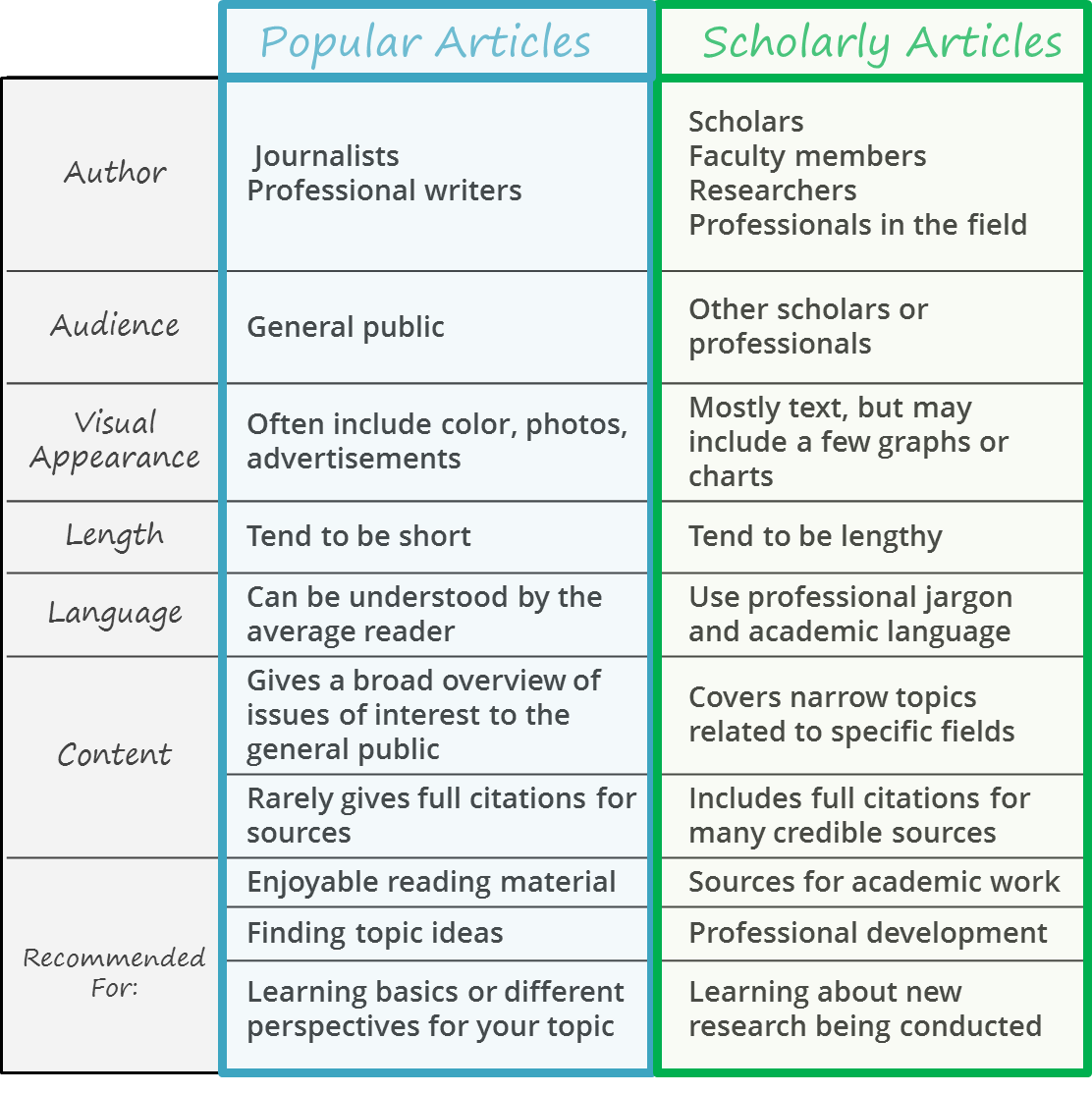
It is important that you are able to tell the difference between scholarly journal articles and popular magazine articles. Use the chart below to learn more about each type so you can better determine which meets your research needs.

Scholarly & Popular Articles by adstarkel. Used under CC BY-NC-SA 2.0.
Sometimes, you'll be instructed to use specific styles of sources like Primary or Secondary. This video is a helpful review of what that means and is broken up into segments.
Video Created by the Suffolk County Community College Library. Embedded from YouTube
